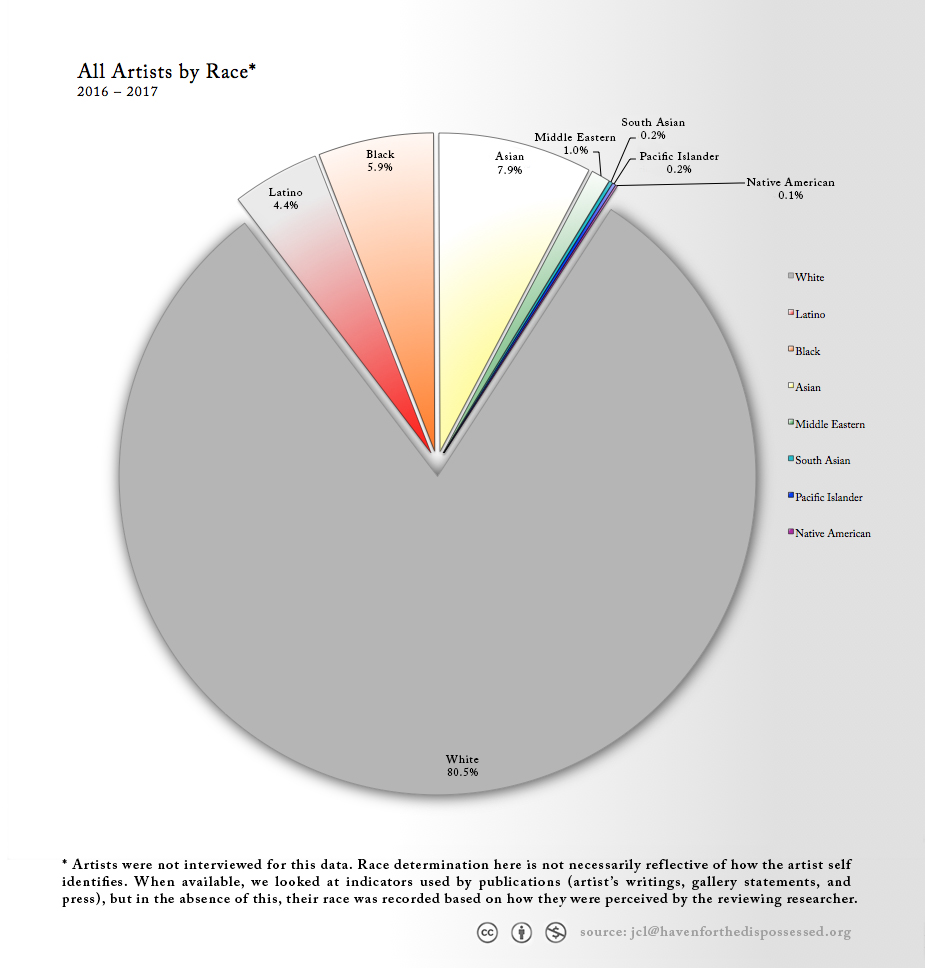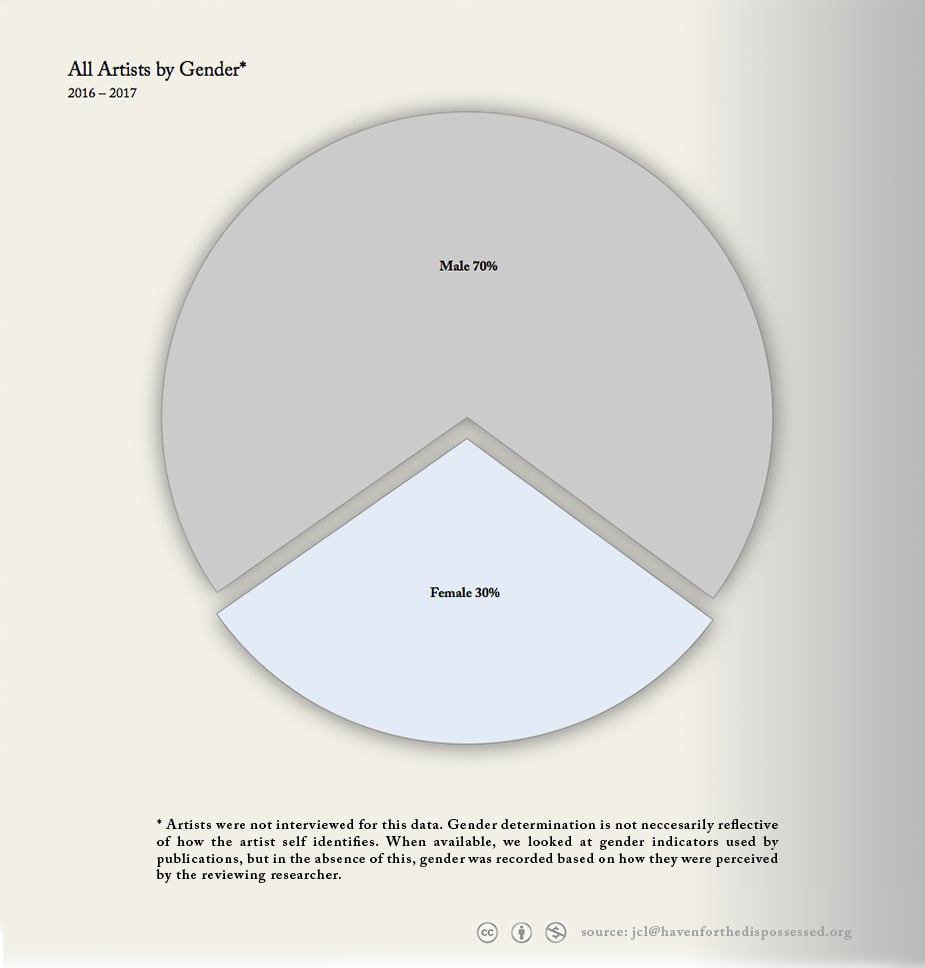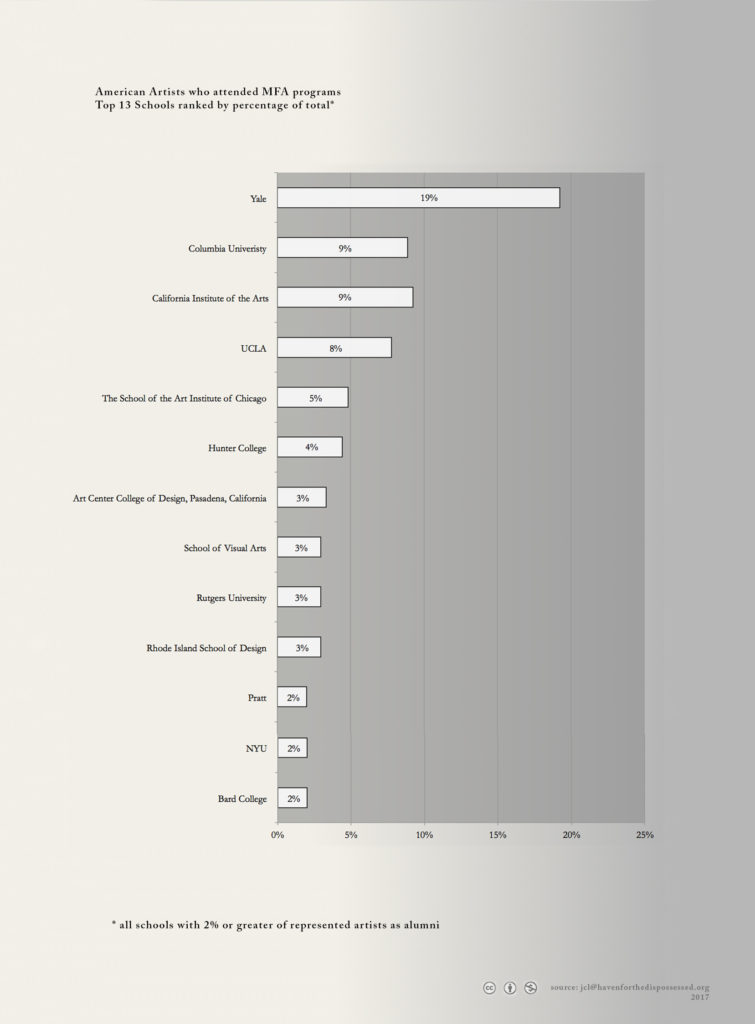Art World
It’s Official, 80% of the Artists in NYC’s Top Galleries Are White
And nearly 20% are Yale grads.

And nearly 20% are Yale grads.

Henri Neuendorf

It’s no secret that white male artists enjoy outsize representation at New York’s top-tier galleries. But a new study suggests just how homogeneous this population of artists really is.
In research conducted by CUNY’s Guttman College in the fall of 2016, students analyzed the demographics of 1,300 artists represented by the city’s top 45 commercial galleries. According to the recently published study, 80.5 percent of artists represented by the galleries are white. That number jumps up to a whopping 88.1 percent if the numbers are filtered for US artists. In contrast, whites make up 64 percent of the general population, according to U.S. census data.
Meanwhile, 8.8 percent of artists represented by New York galleries are black, despite making up 16 percent of the U.S. population. Latino artists are the most underrepresented demographic, making up only 1.2 percent of artists represented by New York galleries despite being the largest minority group in the U.S., making up 16 percent of the nation’s total population.
While the results reflect a startling reality, the study’s methodology requires a caveat: According to the researchers themselves, the study’s data was compiled based on the perception of the researcher. The artists were not interviewed or asked about how they self-identify. According to the project website, students “looked at indicators used by publications (artist’s writing, gallery statements, and press), but in the absence of this, race and gender were recorded based on how they were perceived by the reviewing researcher.” With that qualification, the stats may not be completely reliable.
In an email responding to artnet News’s inquiry about the study, Guttman College professor James Case-Leal explained that the findings presented a challenge to him as a teacher because most of the students in his introductory course to art in New York City were people of color. “While I wanted to give the students tools for deeper experiences in these kinds of art spaces, I had to be aware that I was also teaching cultural hierarchies. Which is particularly problematic because many of my students represent the demographics categorically absent from the European and American dominated collections we were looking at,” he said.

Courtesy of James Case-Leal.
The research also revealed that gender distribution leans heavily towards male artists, who make up 68 percent of those represented by New York galleries. Only 32 percent are female.
Unsurprisingly, education also plays a prominent role in determining which artists find a place in the top galleries. According to the study, nearly one fifth (19 percent) of American artists represented at the selected New York galleries graduated from Yale. No other school cracked the double digits. Other schools with graduates represented were Columbia University and the California Institute of the Arts (9 percent, each), followed by UCLA (8 percent).

Courtesy of James Case-Leal.
Despite the findings, Case-Leal says the study is not about pointing fingers. “Quantifiable data takes the guesswork out of a critique and presents it in public,” he said. “I do not think this information needs to be read as accusatory. It is intended to be an honest assessment.”
Rather, Case-Leal believes the finding underscore the need for government funding to give a platform to art and artists not supported by the market. “I think this data offers an assessment of the primary market that casts reasonable doubt in its ability to equitably facilitate cultural production,” he said. “Our results counter the ‘unregulated market does best’ argument used to justify defunding public art supports. The data reveals a concrete need for expanded government funding and/or market regulation.”